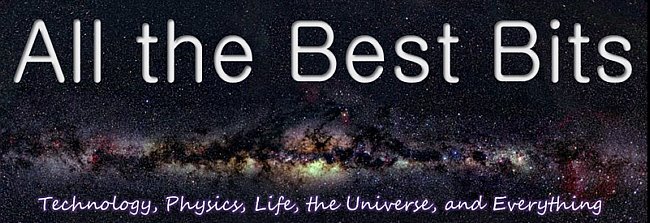Real Astronomy for the Masses
One of the real challenges of approaching the "hobby" of astronomy, is that in today's increasingly urban and light-polluted environment, the cost of equipment necessary to generate even a passable image of the type that you might find in say, Astronomy or Sky and Telescope Magazines, is typically beyond the financial reach of even a committed student.
A good precision optical instrument, a stable mount with precise tracking of the celestial sphere, and a decent CCD imaging setup plus the computer to drive it can run as much as a few thousand dollars. And of course we are all teased in the process by the glorious Hubble Telescope images afforded by a NASA-sized budget.
Well, I am here to report that there is hope for the intrepid who set their sights on the starts. Ahem. As with so many other things these days, the Internet is here to save us. There are now several VERY nice connected observatories, each of which has several high-end telescopes and imaging systems accessible and controllable via a simple web browser. My favorite is the "Astronomy Bed and Breakfast" called New Mexico Skies. They combine friendly service with some of the darkest and clearest skies in North America and some fine instruments including a RCOS 20" Ritchey-Chretien scope. For the price of any old boring bed and breakfast, you can spend the day spelunking in Carlsbad Caverns and hiking in the White Sands national monument, and then pass the wee hours of the night playing with a fantastic set of toys.
My favorite is the "Astronomy Bed and Breakfast" called New Mexico Skies. They combine friendly service with some of the darkest and clearest skies in North America and some fine instruments including a RCOS 20" Ritchey-Chretien scope. For the price of any old boring bed and breakfast, you can spend the day spelunking in Carlsbad Caverns and hiking in the White Sands national monument, and then pass the wee hours of the night playing with a fantastic set of toys.
I would encourage any interested student old enough to look up and say "wow" to go run and bug your parents, teachers, or significant others without rest until they relent and agree to take you there.
For those of you with underdeveloped wheedling skills fear not. The NMS folks run a facility where they host a fleet of net-connected scopes that can be purchased outright and run on a contract basis, or even rented on an hourly basis.

The proprietors conduct regular classes in almost every aspect of astronomy from introductory binocular tours to advanced imaging and astrometry. The kind of pictures even beginners can take are astounding. Here is one from John Setle's Web site of the Magnitude 8.4 Whirlpool Galaxy, M51 in Canes Venatici.

Note that he took this image on his FIRST NIGHT! A little more practice with exposure control and a little work with filters and a PC for some Photoshop image processing and he will be capable of selling magazine-quality astronomical images. Check out his web site (towards the bottom of the above link), or Google "New Mexico Skies Images" and see what can be done there and remotely.
Here's one more picture of the same galaxy taken by a more experienced imager, Ron Wodaski, the author of a fantastic book entitled "The New CCD Astronomy."

And here's yet one more link to the amazing images attainable at NMS. A couple of other interesting similar services are Slooh, and The Harvard Smithsonian-sponsored Micro-observatories.
Now for the truly eager to learn, yet financially challenged, I recommend another course in parallel. Go out and find a local ATM club. No, not bank machine lovers. Amateur Telescope Makers. With absolutely no experience at all and a little bit of non-profit type guidance, it is possible to make your own telescope, mirror, mounting, and all. The raw materials are quite inexpensive compared to what a commercial scope of similar quality would cost. And while the labor, particularly on the mirror grinding, polishing, and figuring side, will add up, the learning experience is almost unparalleled. I have evolved to the opinion that no student should be allowed to graduate from high school without having made a telescope of their very own.
Here is a link to the telescope makers' club I have frequented here at the Chabot Space and Science Center in the Oakland California hills. I've personally seen, and in a couple of cases, helped 12 year-olds build fantastic instruments that they treasured for years and later passed down to other amateur astronomers. More on Amateur telescope making in future posts.
If you are doubtful about whether this particular affliction is your thing, check out a local Star Party. Google your town and "star party" to find the nearest shindig of eager amateures. You don't even really need to bring anything, but do read up on the etiquette before you show up, i.e. show up early while it is still light, take some steps to make your car lighting "night-vision friendly," don't bring white flashlights (tiny red LED lights are the rule), etc...
Clear Skies!























No comments:
Post a Comment